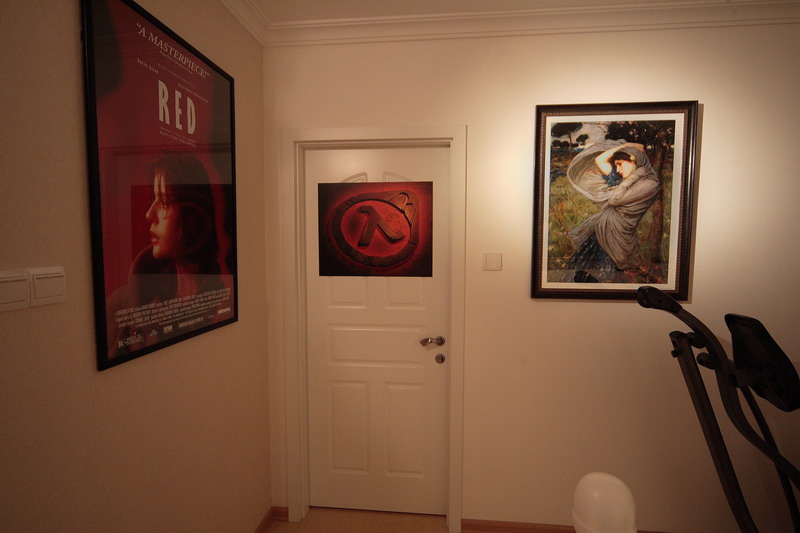
Studio
(EDIT: I have moved back to California in 2012, so everything you see below is the old studio.)
In early 2008 I started designing and planning my next studio, and it took about a year to finish--from research, design, shopping for material, construction, moving, to decorating. I set out to design a space that is very comfortable and cozy, but at the same time very inspirational and full of creative vibe. I read books on studio design/construction/acoustics and picked the brains of experts on the matter in pro audio internet forums, fearing that unless I learned as much as I could cram into my brain, I would fail at designing a quality workspace. I think I achieved what I set out to do, and ever since it was completed, I've been spending all of my waking hours in the studio.
If you're interested, you can check out the Design Plans & Construction Photos, including the sketches, 3D mockup designs, and diagrams I did, as well as construction photos.
Here's a "fly-through" video I made just for fun:
And here are photos of the studio:

Open the door and enter my little piece of heaven.
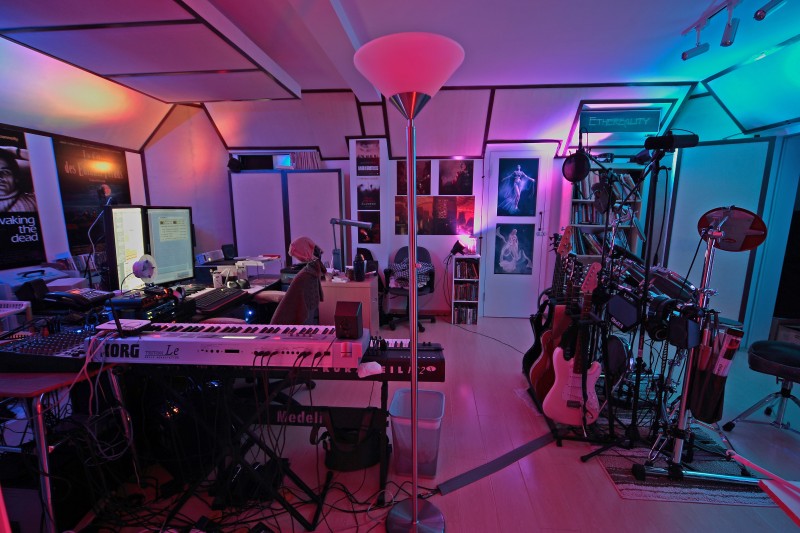
The colorful lighting (six LED color-changing lights controlled by a DMX-192 control console) is my attempt to create a more interesting environment for inspiring creativity (I have them set to slowly morphing to different colors over time) . Colors create mood, and mood triggers emotions and ideas. The studio is not that big--just big enough to house all my gears in a reasonably comfortable layout, meaning I can't exactly swing my axes around without hitting anything, but I also don't have boxes piled up like I used to in the old studio. I used to have my drum set (Clavia Ddrum 4 system) facing away from the desk to save space and I like it much better now facing the desk.
The dual 24" LCD display setup is just about the right size when I need to rotate them both horizontally (when not working on music)--any bigger and they'd end up blocking the studio monitors' (Klein + Hummel O 300D's--my favorite pieces of gear in my entire studio) direct path to my ears.
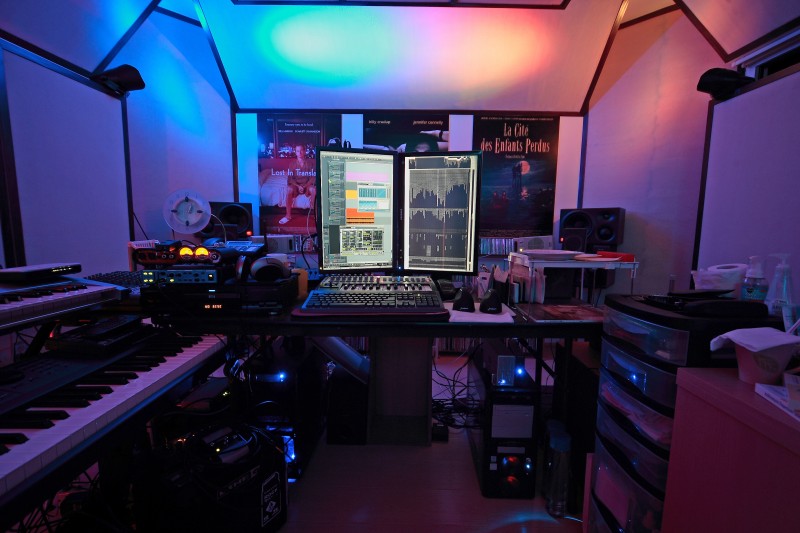
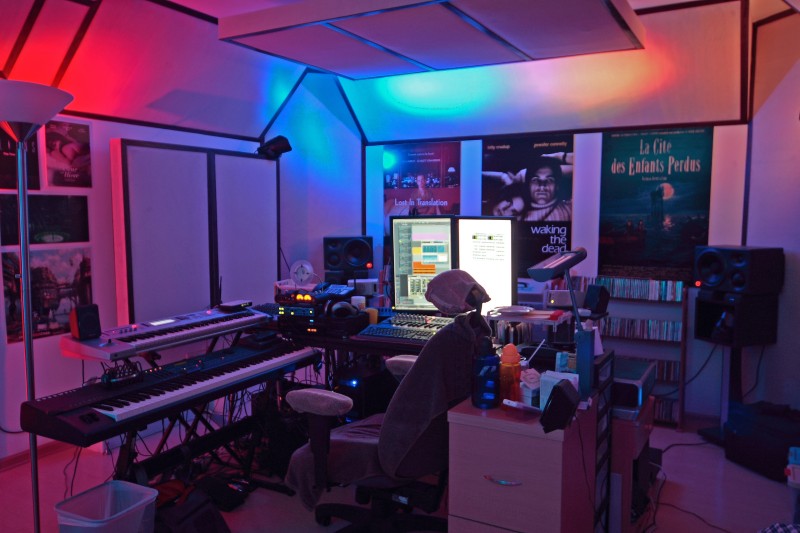
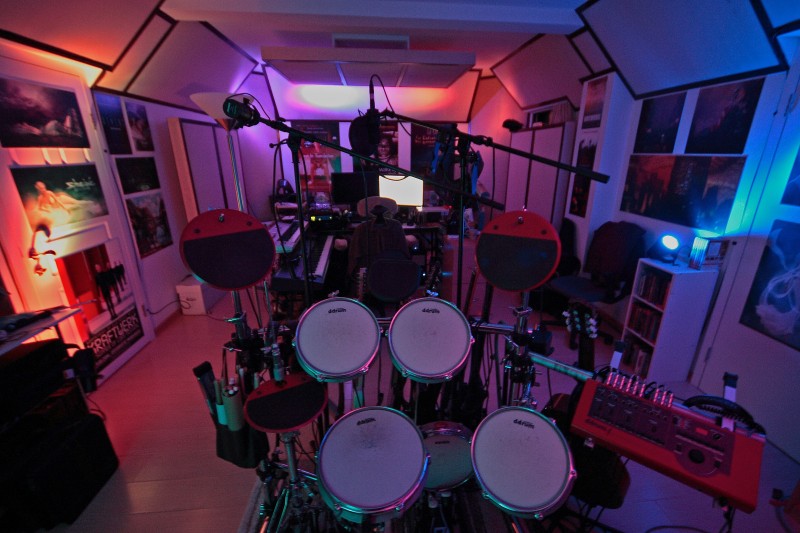
Drumming while with the LED lights set to changing colors or flashing to the beat is really a different experience than drumming with normal lighting.
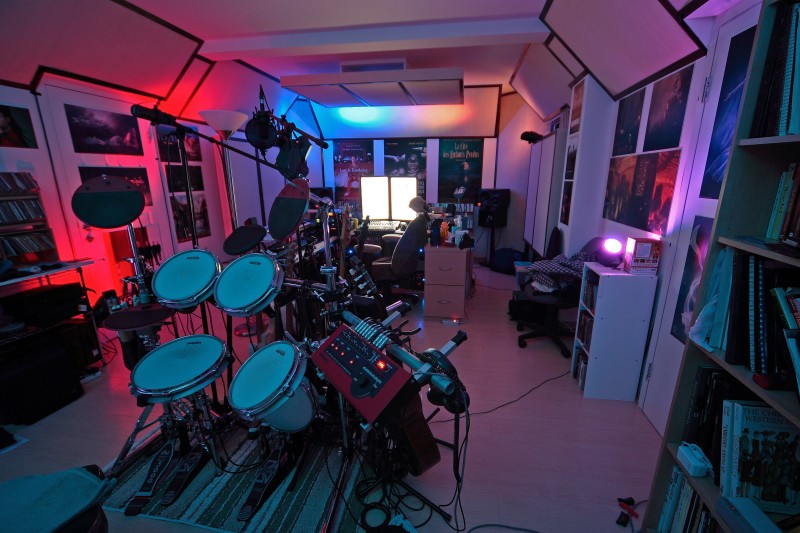
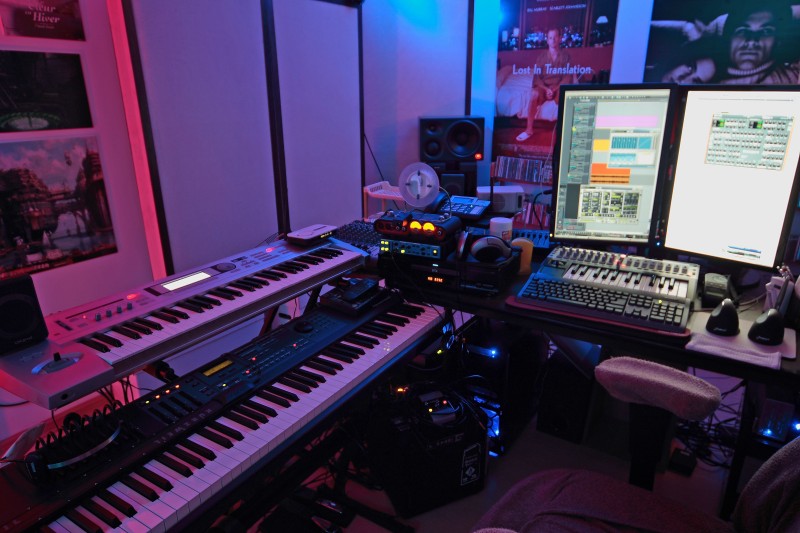
My master keyboard controllers are the Kurzweil PC2X for piano weighted action, and Korg Triton Le from synth weighted action. There's also the Novation ReMOTE 25 SL, Korg Nanos, and iCON i-KEY.
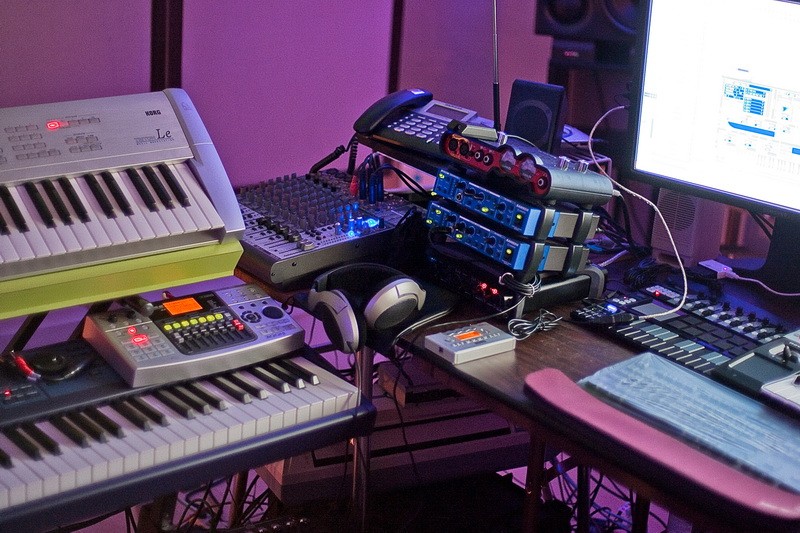
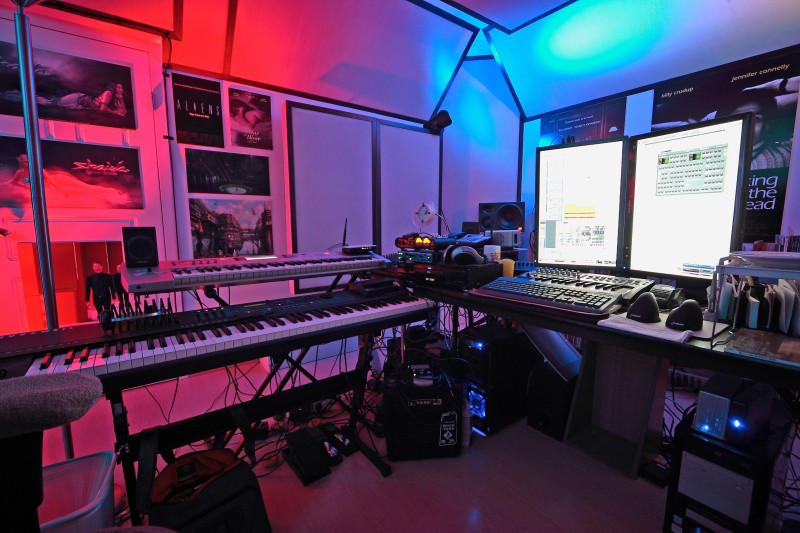
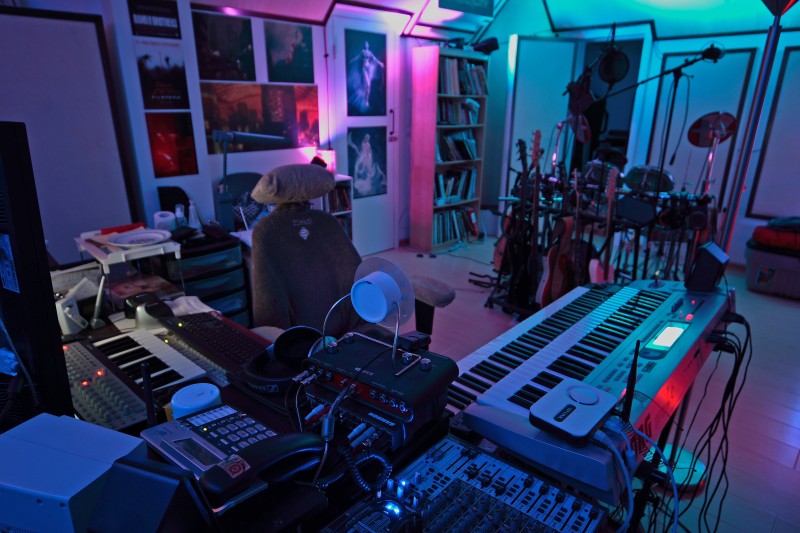
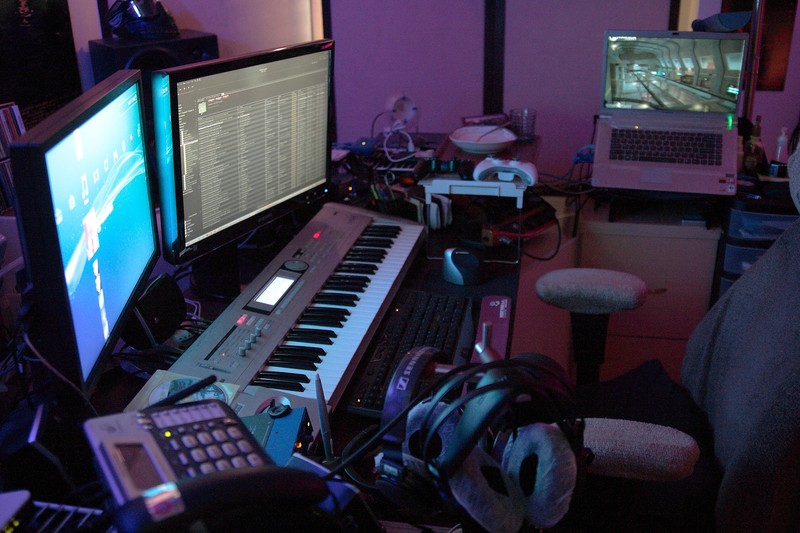
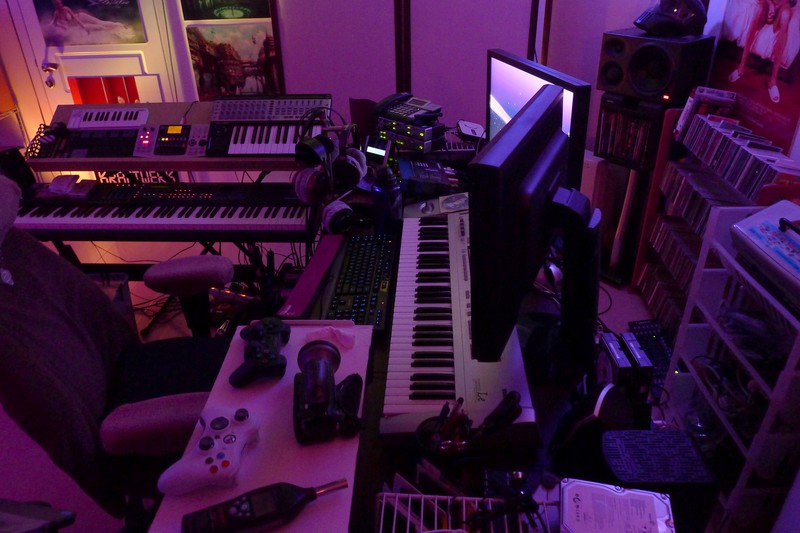
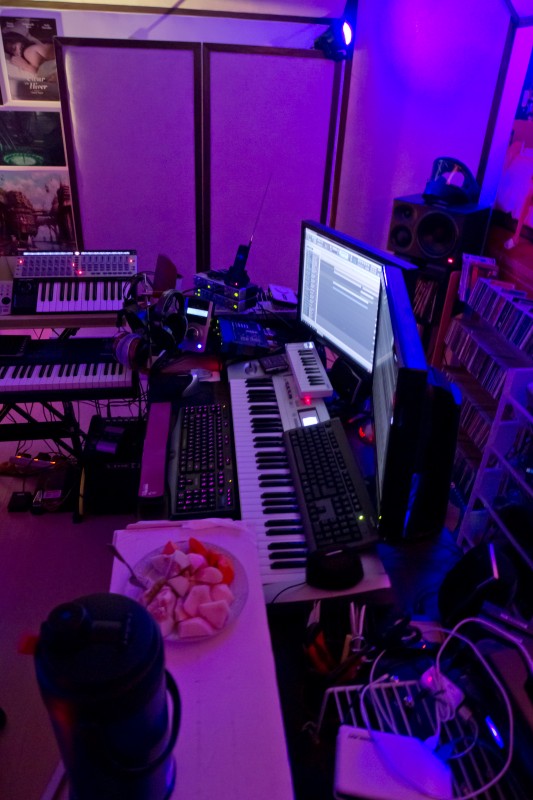
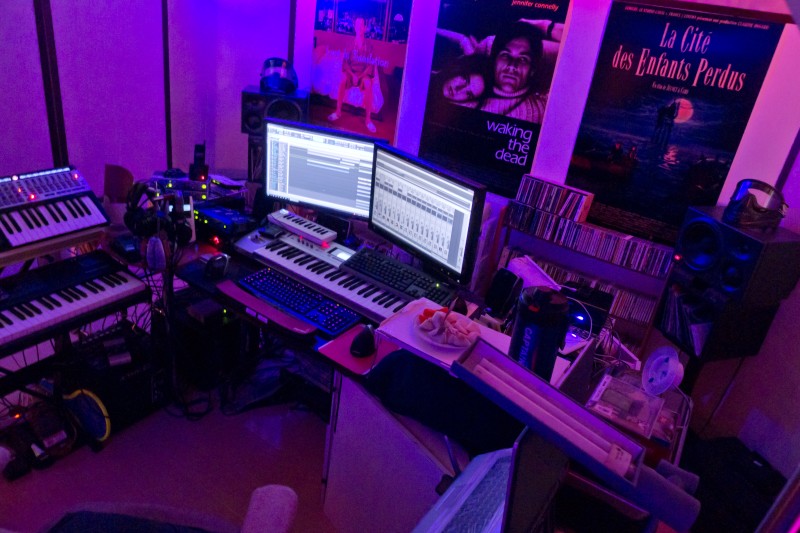
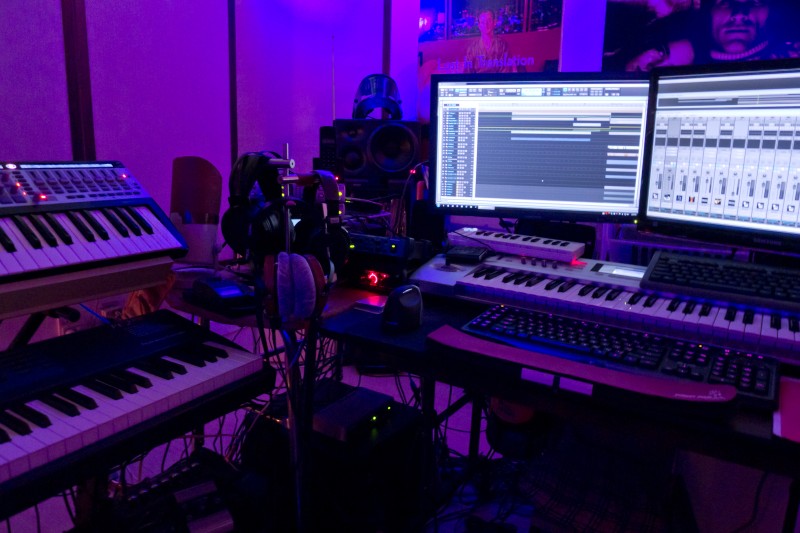
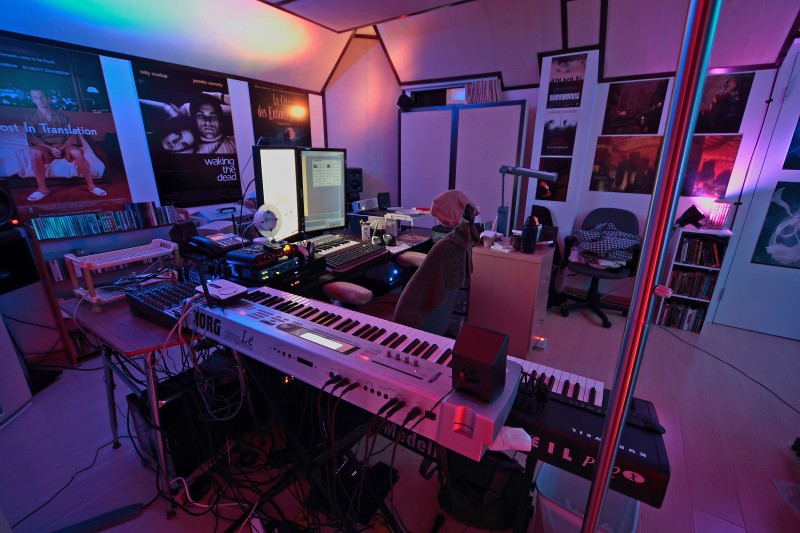
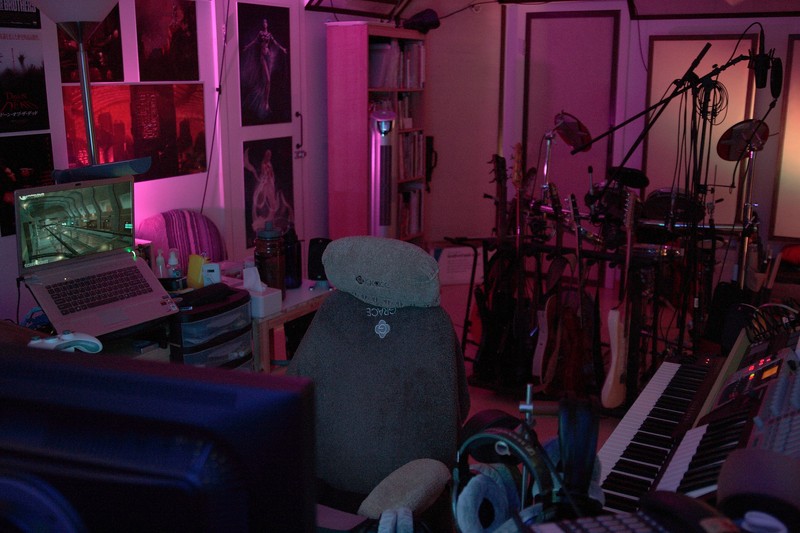
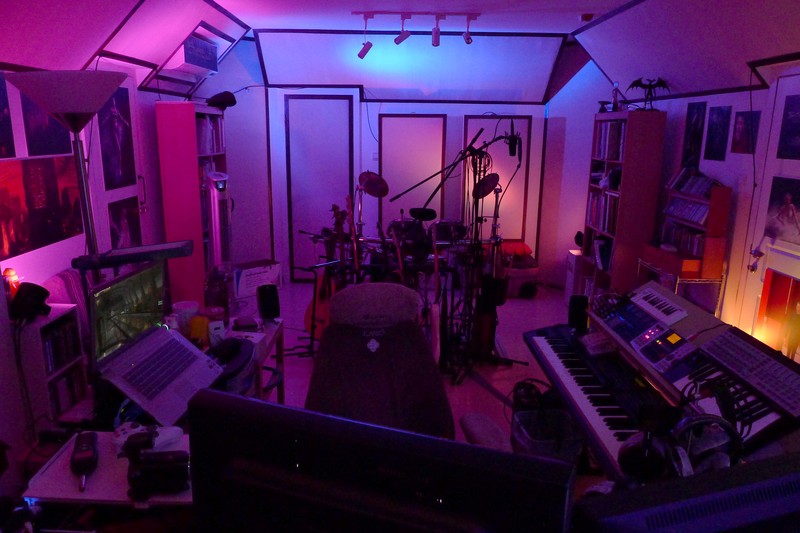
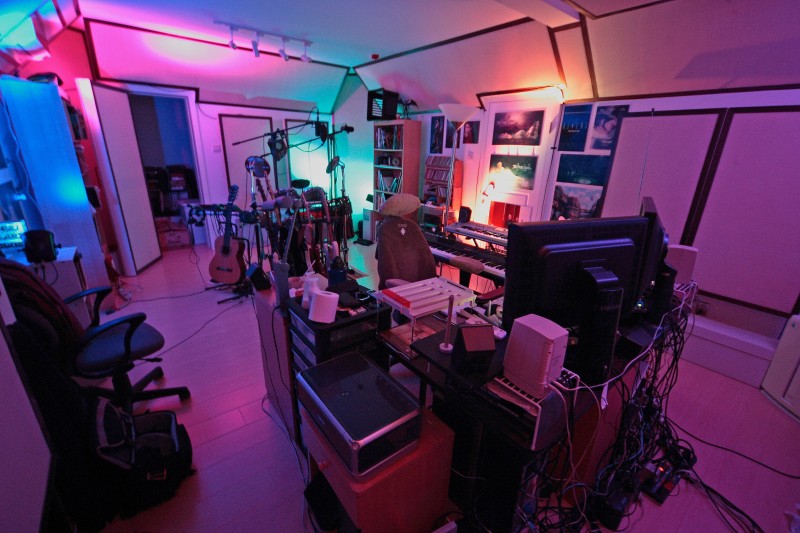
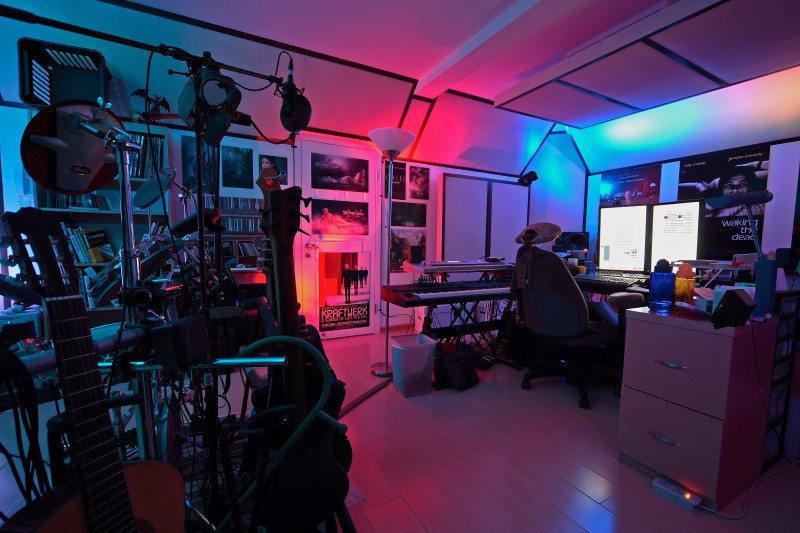
I do have normal lights in the studio too, and I usually only turn on the funky colors when I feel like creating some extra vibe (also I'm a visual artist as well, so when doing artwork and editing photography, I need to make sure my eyes won't strain or have competing and distracting colors in my field of vision). Here's what my default lighting during normal working situation looks like:
The blue arrow is where my tungsten light is pointing, and the result is a diffused, soft ambient lighting that is easy on the eyes, cozy, and glare free on the computer display, while providing just enough ambient illumination to counter eye-fatigue.
I also have"normal" household lights that I almost never turn on except when I really need to see everything clearly--such as when fixing audio gear.
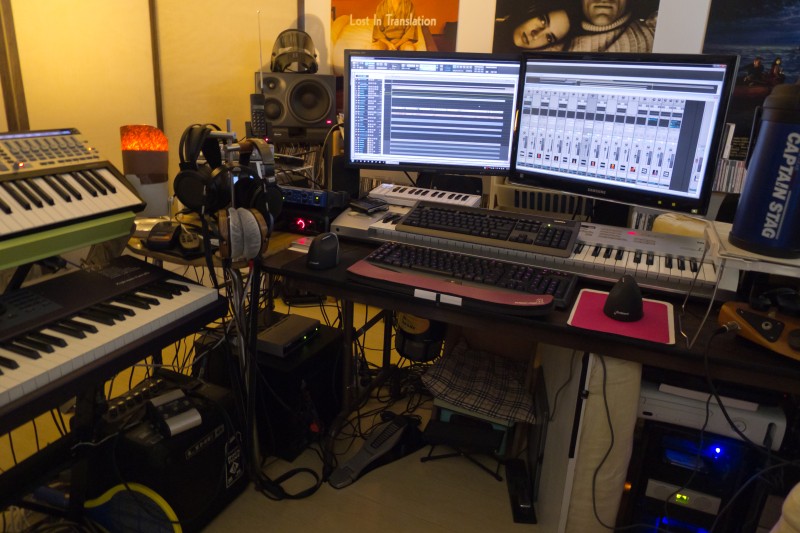
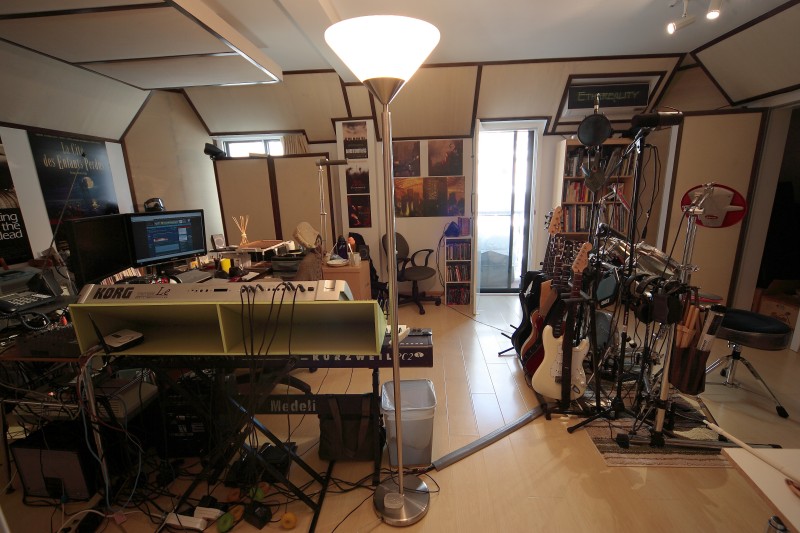
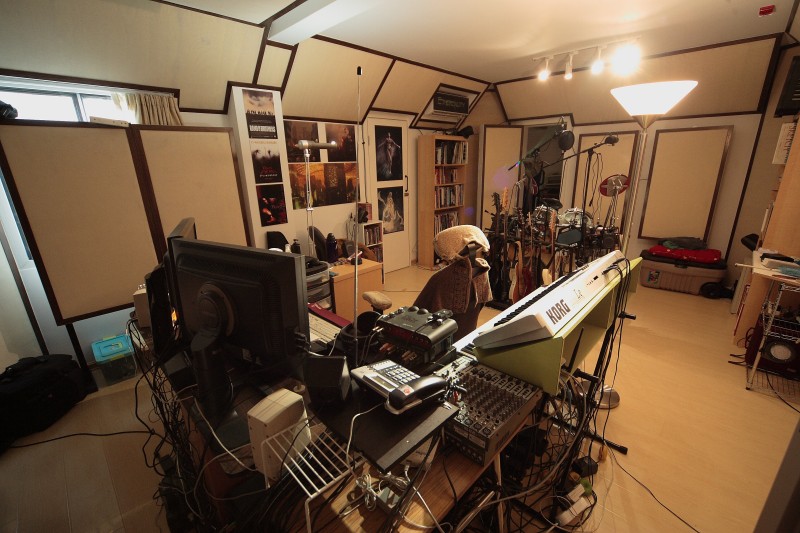
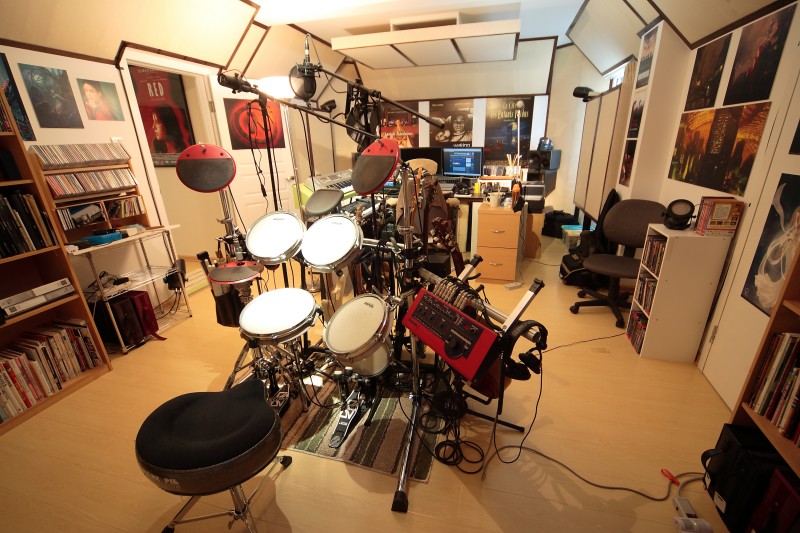
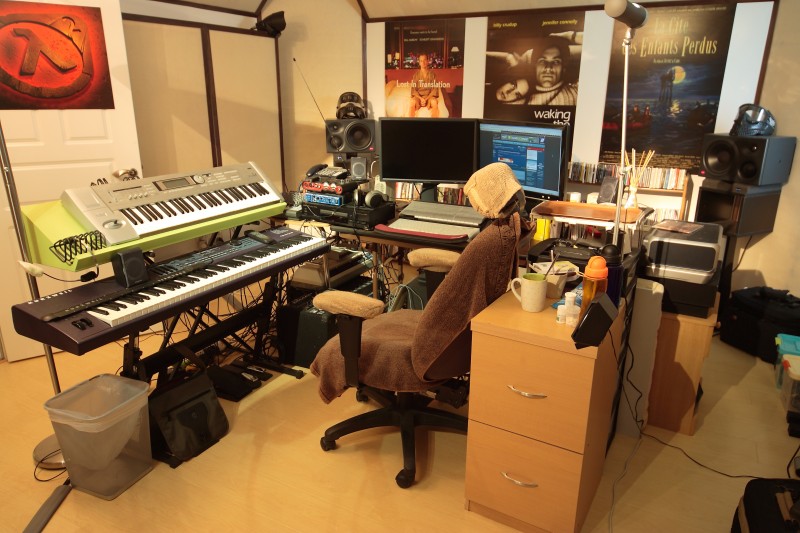
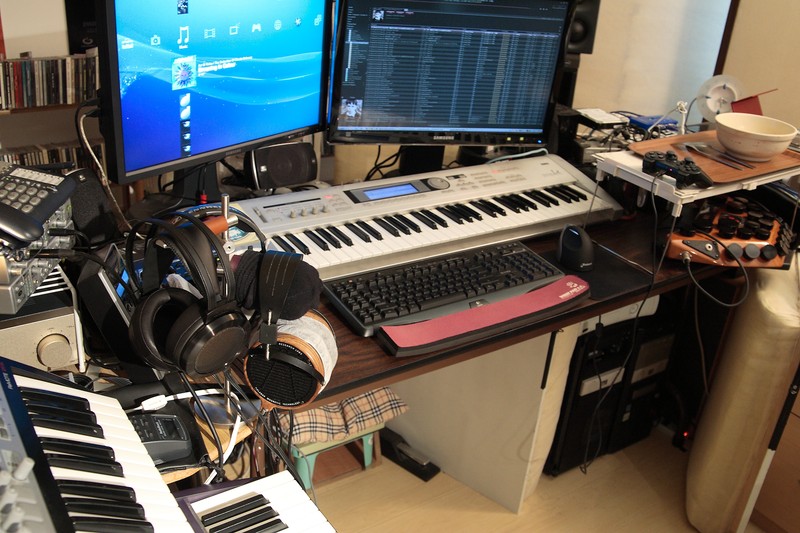
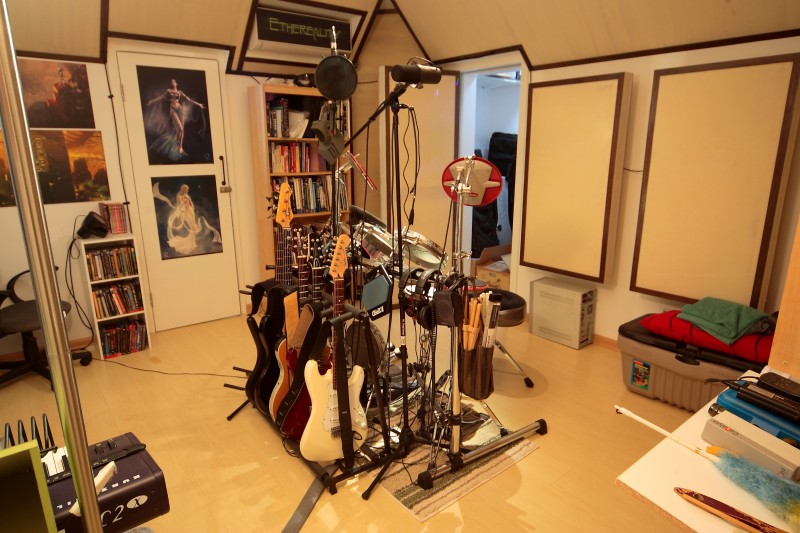
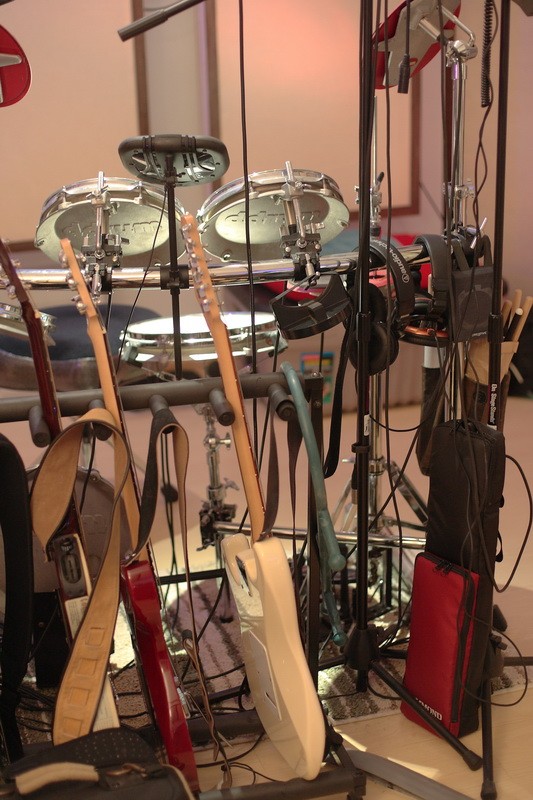
The Klein + Hummel O300D's are placed on Auralex MoPads, and the Mopads on placed on custom-made shelves that sit on speaker stands.
I'm a head-fi.com member, so that explains the headphones.
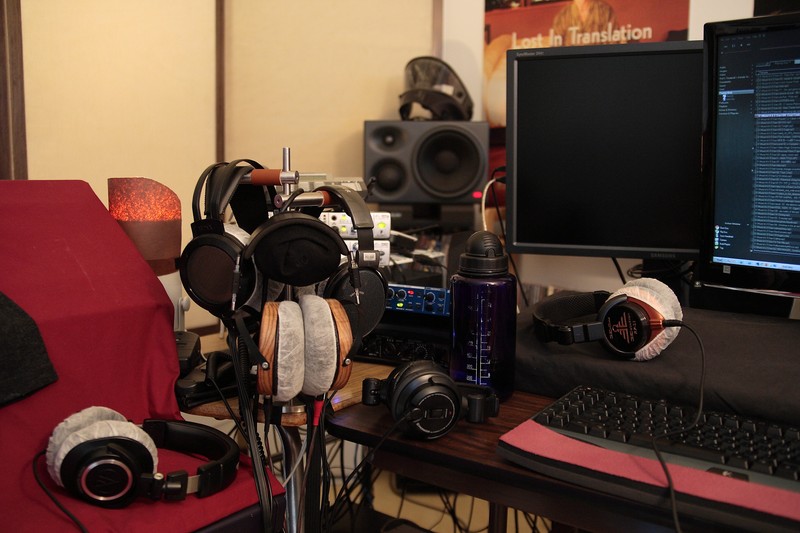
My two favorite cans are the Stax 007mk2 and the Audez'e LCD-2.
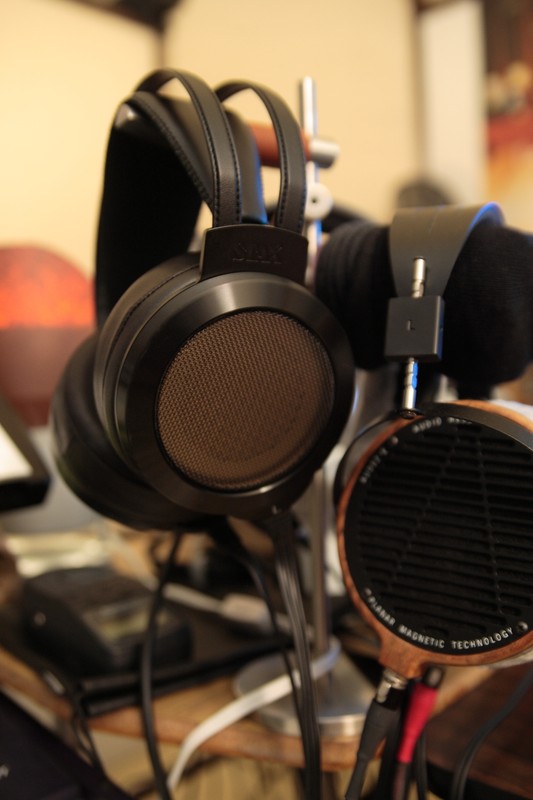
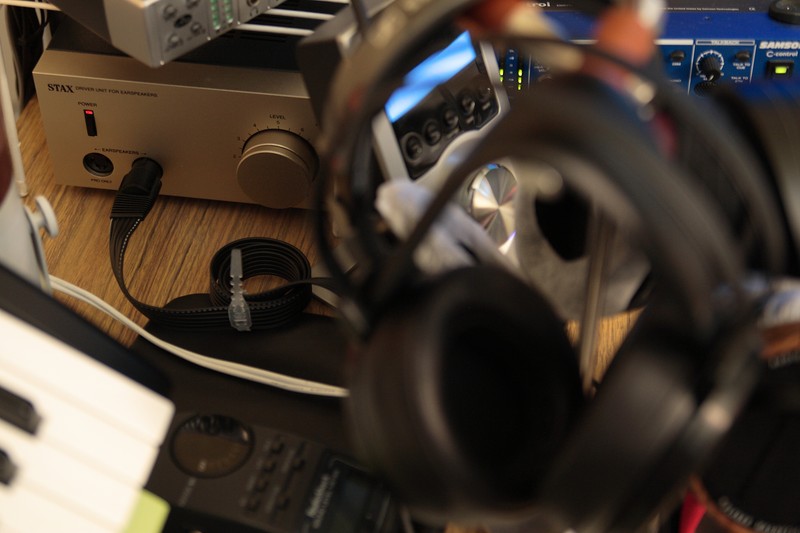
My other headphones. From left to right: Pioneer SE-DJ5000, Sennheiser HD650, Audio-Technica ATH-M50, Westone 3 (now replaced with the Westone 4), Equation RP-21, Sennheiser HD555, and Denon AH-D950.

I also had the Denon AH-D7000 for a while but then sold it. I also had the Shure SE530PTH and Shure E4C as well.
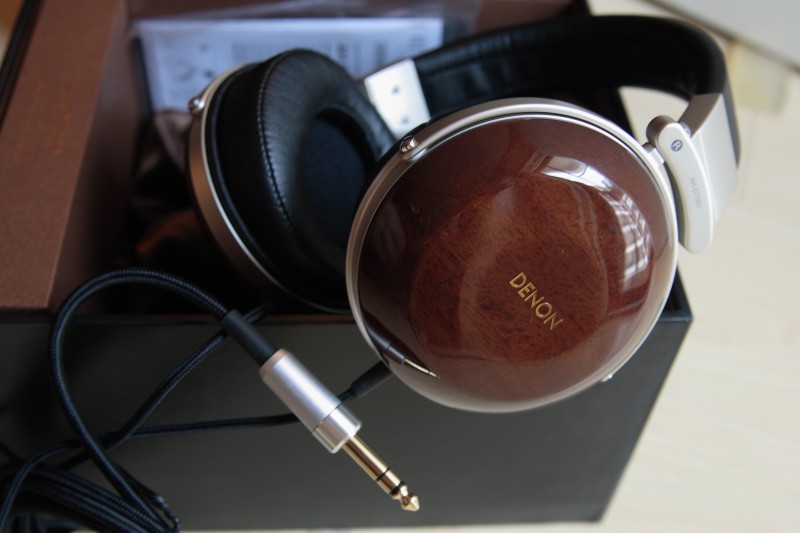
Some artsy shots of gear porn:
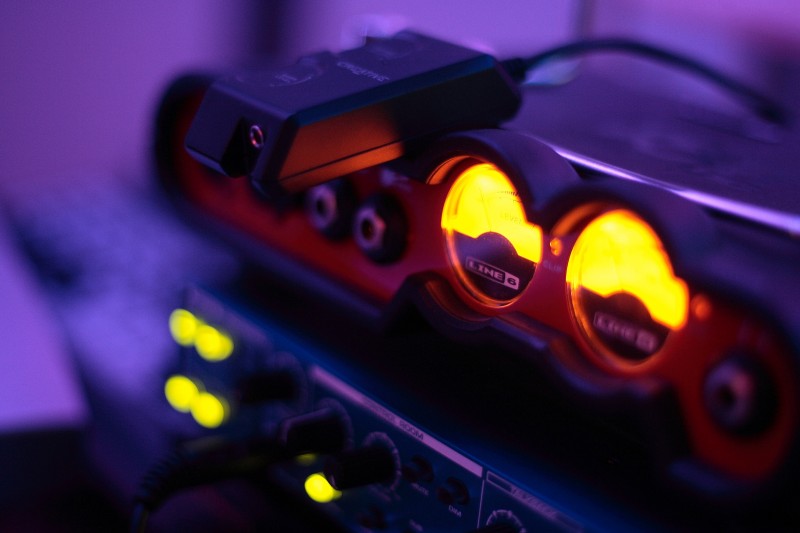
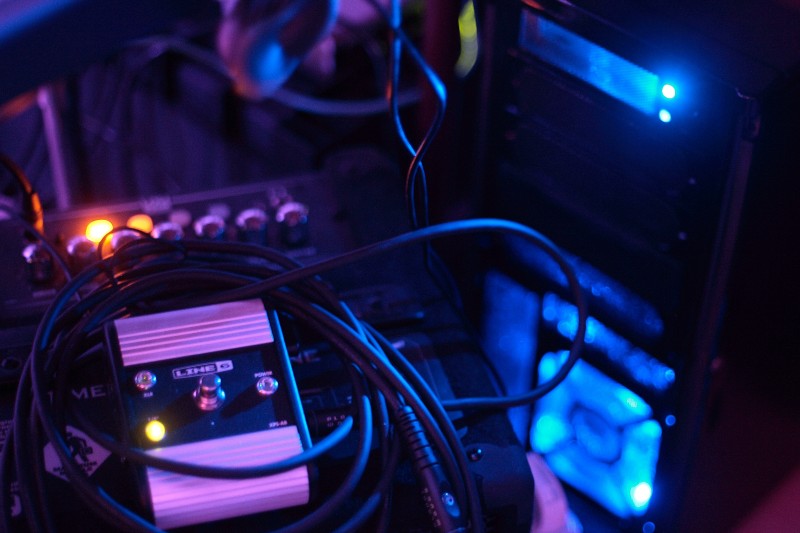
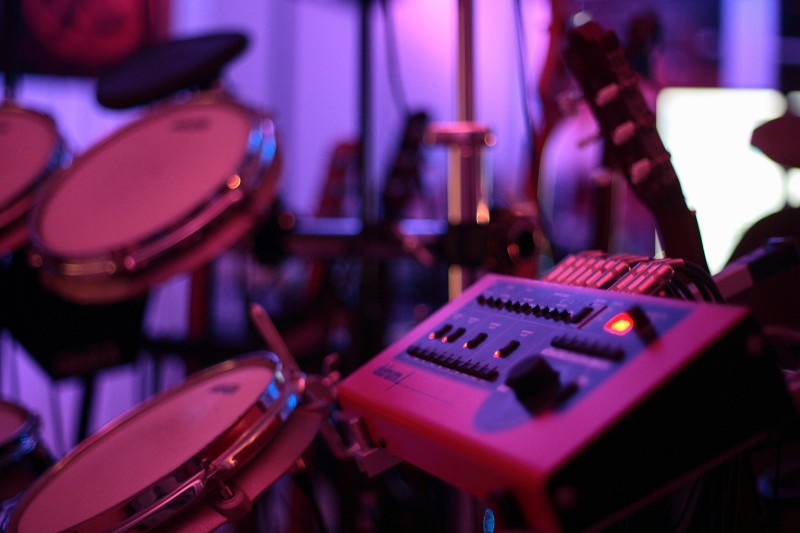
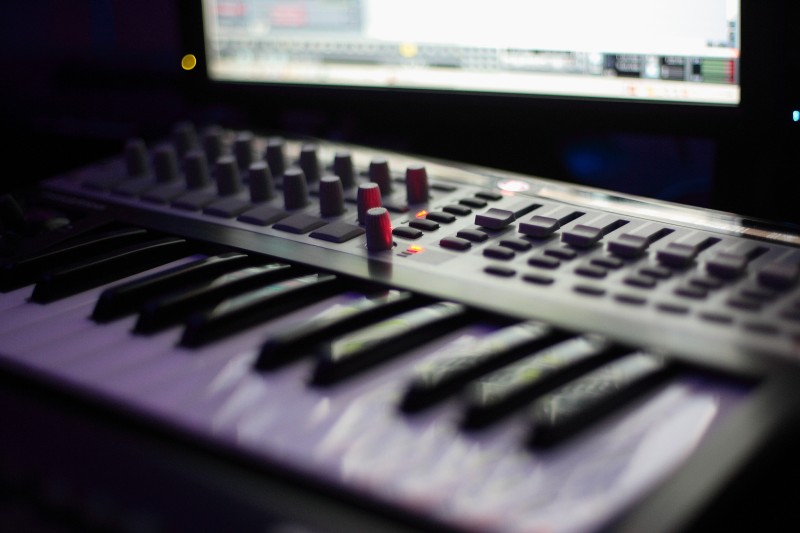
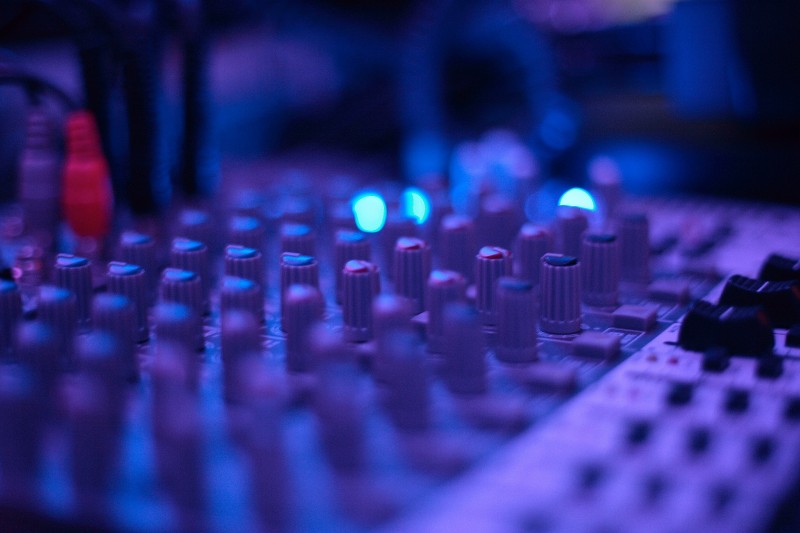
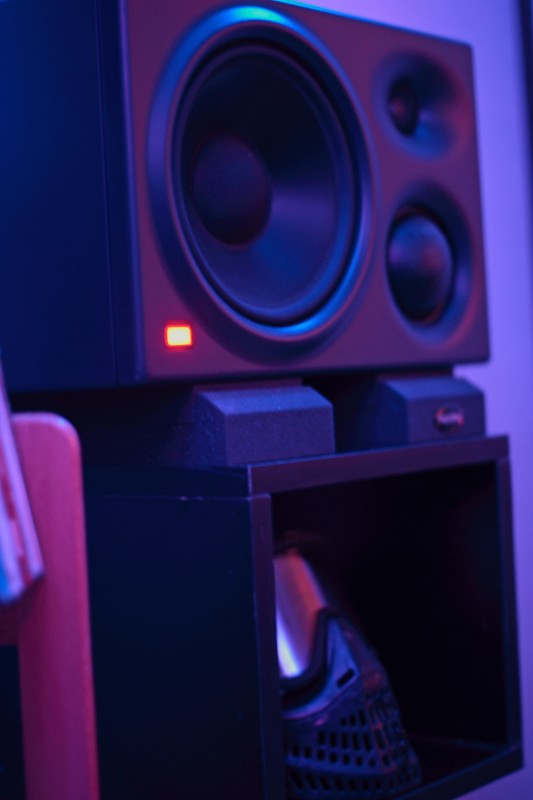
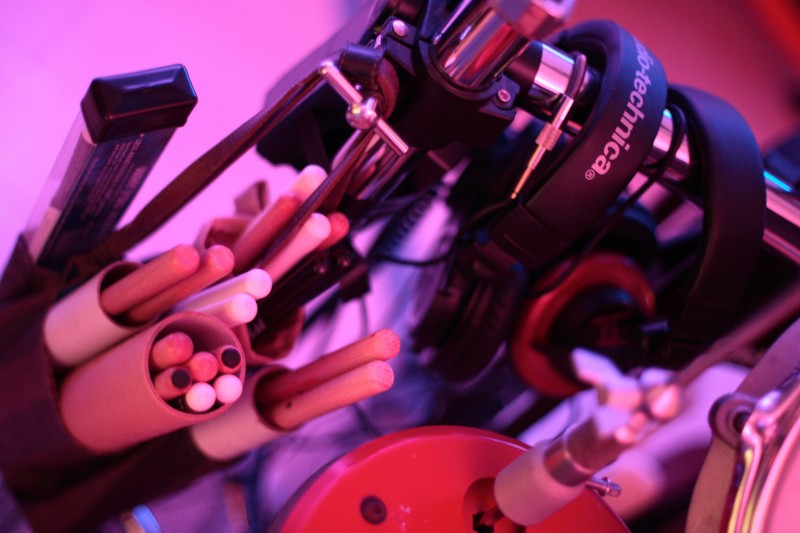
My current favorite drumsticks are the Buddy Rich sticks (the white ones). Nice solid weight but rebounds beautifully with great control and agility.
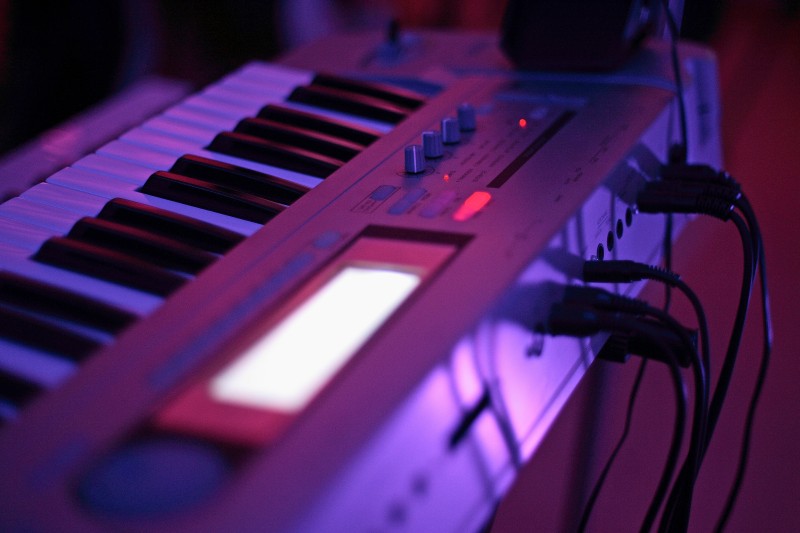
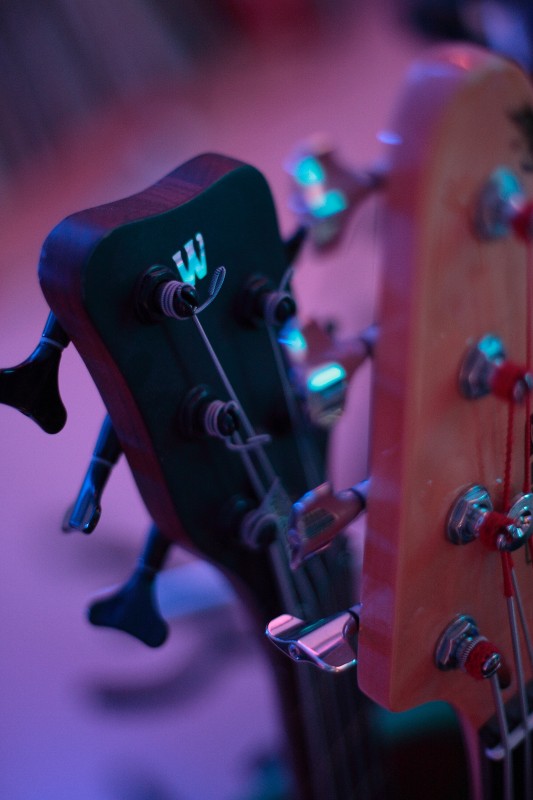
And of course, the cable jungle (this is only the area behind the computers--there's more behind the keyboards and the mixer). And no, a patchbay won't help this, and I don't have enough space in the studio for a dedicated machine room.
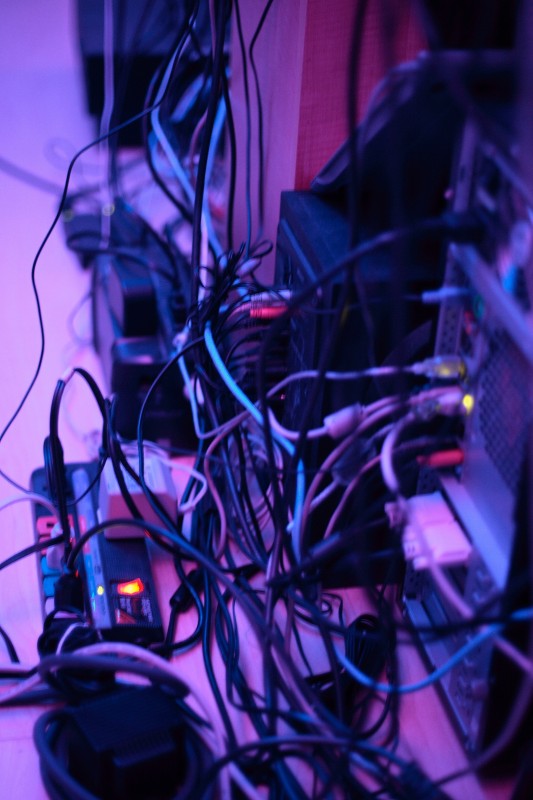
So how do I keep the studio quiet with computers running? I originally designed a pretty elaborate isolation box, but in the end realized it was probably overkill. You can see the design plans in the Design Plans & Construction Photos section. What I ended up doing was actually much simpler, and works quite well (though I still think it could be quieter yet, and I'll design another ISO box soon). I simply had 4" glassfiber panels wrapped in burlap and fixed to wooden panels:
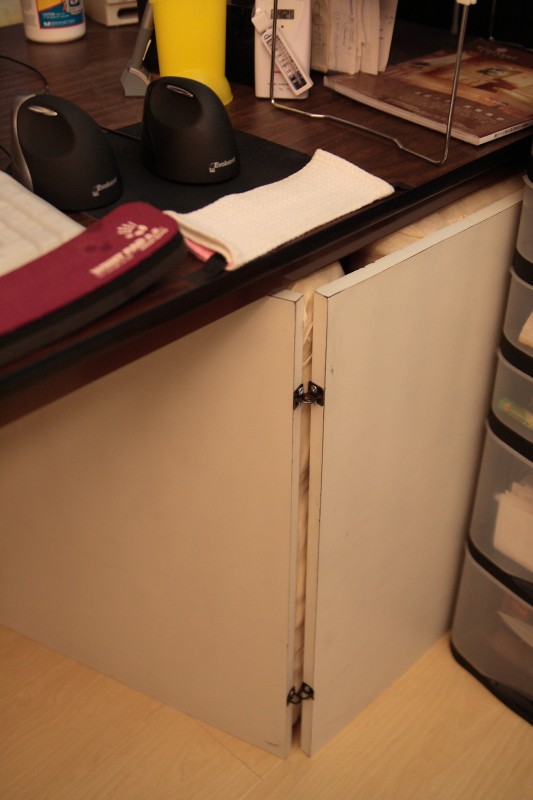
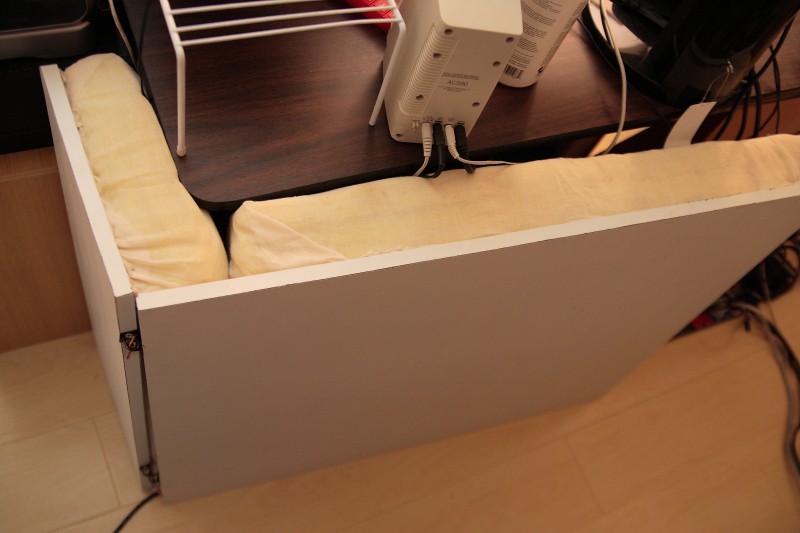
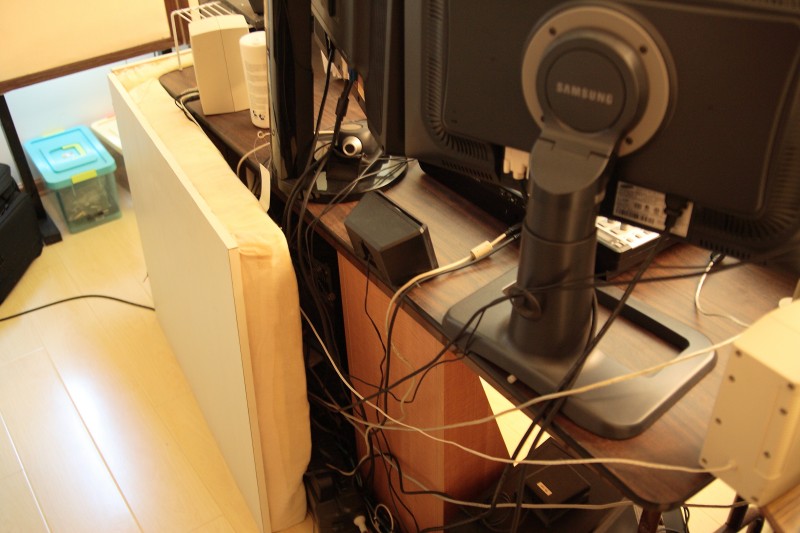
They don't really need to be secured as each panel's thickness prevents them from just falling over, but I decided to use a pin to keep them secure anyway, in case somene bumps into them or something.
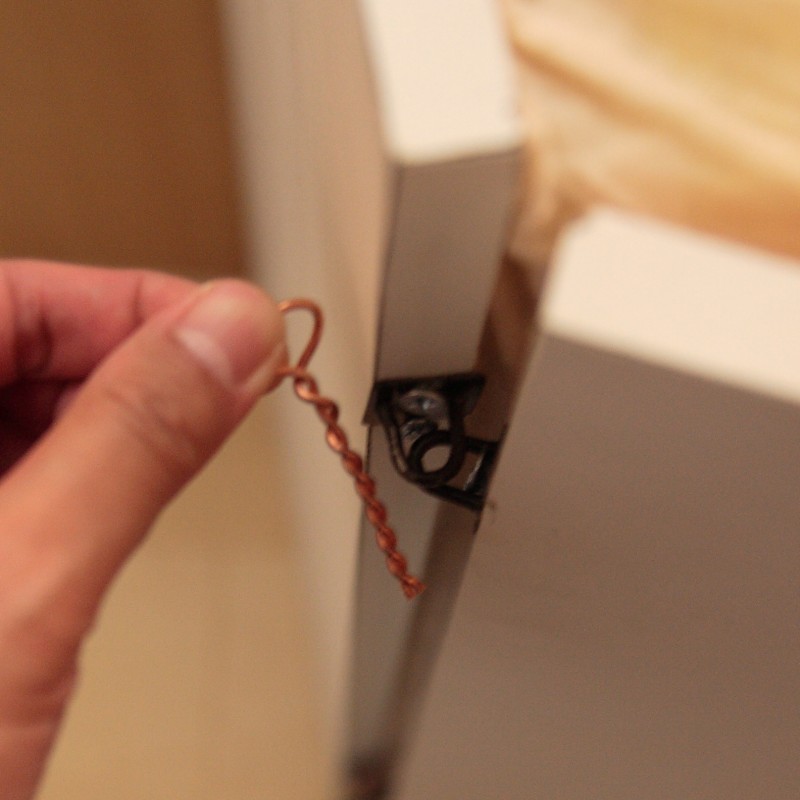
To access the computers I just slide them out of the way.
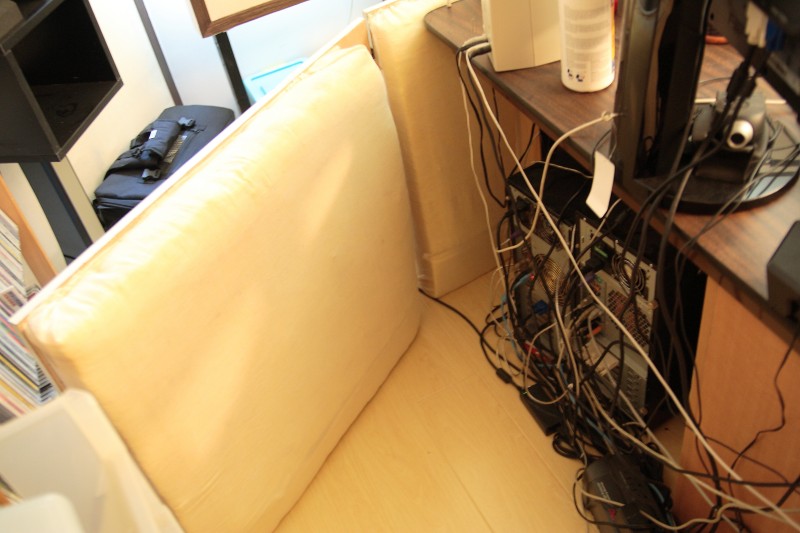
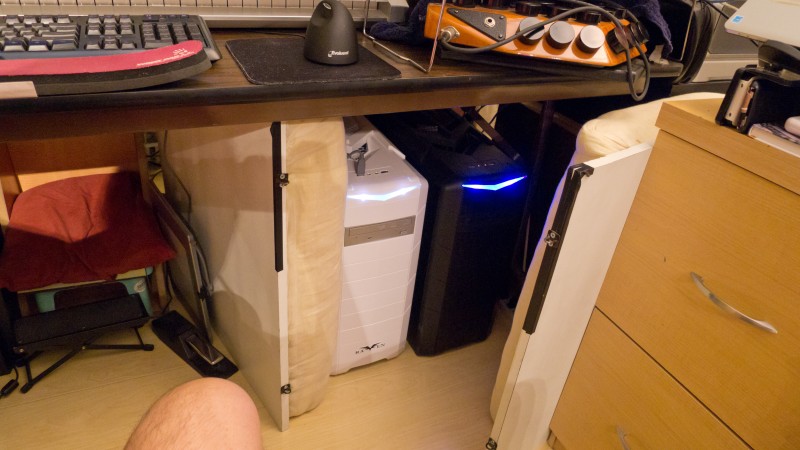
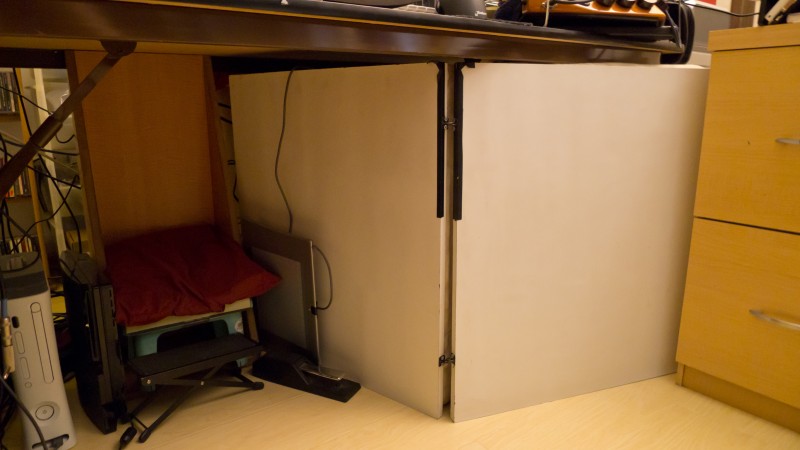
By now you might have noticed that there are masks and helmets and goggles in the studio. They are remnants of my airsoft days when I was younger.
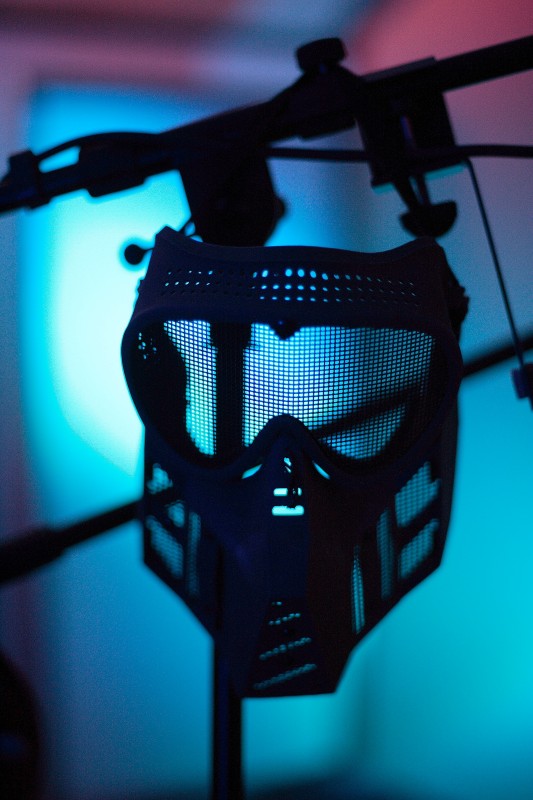
Some more photography of gear:
Exterior---Entrance/Kitchen---Living Room/Study---Bathroom (1st Floor)/Stairs
Studio ---Bedroom/Dressing Room/Bathroom (2nd Floor)
Design Plans & Construction Photos